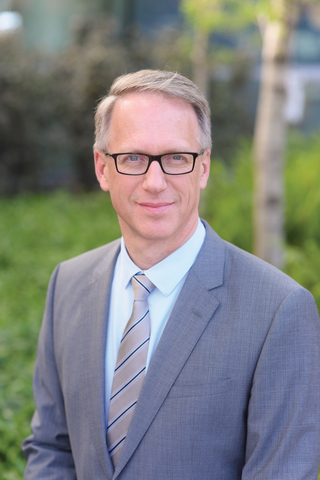
LOS ANGELES– A recent study reveals differences in how symptom toxicity is reported for children receiving cancer treatment in clinical trials. Doctors often underestimate or miss a child’s symptoms, while caregivers tend to overestimate symptoms.
Children’s Hospital Los Angeles was one of nine hospitals that participated in the study. David R. Freyer, DO, MS, Director of the Survivorship and Supportive Care Program within the Cancer and Blood Disease Institute at CHLA, was the study’s lead author. The study, which was recently published in the Journal of Clinical Oncology, emphasizes the need for direct child self-reporting during cancer treatment.
Of the 40,000 children receiving cancer treatment annually, more than 60% take part in clinical trials. Research teams, regulatory agencies and patients rely on adverse event reports completed by doctors to determine a treatment’s safety and impact on quality of life. If reports don’t accurately convey side effects, patients may continue receiving cancer therapies that cause excessive symptoms.
The study team collected symptom reports from 438 children aged 7 to 18, their doctors and their caregivers. Study participants included children with a variety of cancer types from nine pediatric cancer centers across the country. The study focused on 15 common symptoms during cancer treatment, including fatigue, nausea, vomiting, mouth sores, pain, sleep difficulties and others.
Dr. Freyer and the study team found significant differences between doctor and caregiver symptom reports compared to the child’s self-report. Agreement between child and doctor reports was only poor to fair. Significantly more children reported symptoms than their doctors reported for them. Approximately 20-40% of children reported more severe symptoms than their doctors did. On average, children reported twice as many symptoms as their doctors.
“These findings agree with earlier studies, but our study’s size and design add strong weight. Over 400 patients with a few different types of cancer participated, and we evaluated 15 symptoms both before and after treatment,” says Dr. Freyer.
Although this discrepancy applied to all symptoms, doctor reporting was particularly low for fatigue, depression, anxiety and insomnia, which are difficult to observe during an office visit. For example, over 60% of children whose doctor reported no fatigue actually had fatigue. Among the symptoms commonly missed were those that signal a need for change in clinical management, such as mouth sores and vomiting.
In contrast to doctor reports, parent or guardian reports tended to overestimate symptoms, including nausea, poor appetite, pain, fatigue and anxiety. Agreement between child and caregiver reports was somewhat better.
“Our findings show that child self-reports should complement doctor adverse event reporting whenever possible,” says Dr. Freyer. “Children are best able to identify and remember their own symptoms throughout their cancer treatment.”
In instances when the child is unable to self-report, doctors should consider input from caregivers. While the study did not include children younger than 7 years old, the researchers believe caregiver reports would help in these cases, too.
An invited editorial that accompanied the published study, authored by an oncologist at Seattle Children’s Hospital who was not part of this research, highlights the need for change. The review states that research has repeatedly pointed out these same discrepancies in symptom reporting. To optimize pediatric cancer outcomes, research and clinical care must incorporate the child’s voice and experience directly. The editorial concluded that Dr. Freyer and his team have provided the necessary science and rationale — and now it’s time for change in research and clinical practice.
During every cancer clinical trial, doctors report symptoms patients experience using the National Cancer Institute’s (NCI) Common Terminology Criteria for Adverse Events (CTCAE). The CTCAE assesses any harmful side effects of cancer treatment. The NCI recently created a version of the measure that adults with cancer complete for themselves, capturing the patient’s experience directly. However, cancer trials for children do not currently use similar direct reporting measures. Until now, there has been no version of the CTCAE adapted for children.
As part of their preparatory work leading to this study, the research team developed and validated a version of the CTCAE for children and their caregivers to complete. The measure captures both physical and mental health symptom side effects of cancer treatment, ranking their severity on a scale of 0 to 3.
“We hope that future pediatric cancer clinical trials will incorporate direct child reporting using our measure or something similar,” says Dr. Freyer. “More accurate reporting will limit new treatment toxicity and help children and families decide which of two similar treatments is better tolerated.”
Dr. Freyer and the study team have provided a deeper understanding of how children, their doctors and their caregivers perceive cancer treatment side effects. The benefit of child self-reports likely goes beyond informing clinical trial toxicity assessment to improving their clinical care.
Research shows that routinely using direct symptom reporting from adult cancer patients improves toxicity assessment. According to the study findings, a more complete and accurate knowledge of patient symptoms could help clinicians better understand the patient experience and improve care.
The overall principal investigators of this federally funded work are Bryce B. Reeve, PhD, at Duke University School of Medicine and Pamela S. Hinds, PhD, at Children’s National Hospital and the George Washington University School of Medicine and Health Sciences. In addition to Drs. Freyer, Reeve, and Hinds, other study authors include: Li Lin, MS, Molly McFatrich, MPH, and Nicole Lucas, BS, of Duke University School of Medicine; Jennifer W. Mack, MD, MPH, of Dana-Farber Cancer Institute and Boston Children’s Hospital; Scott H. Maurer, MD, of University of Pittsburgh Medical Center Children’s Hospital and University of Pittsburgh School of Medicine; Justin N. Baker, MD, of St. Jude Children’s Research Hospital; Katie Rose Villabroza, BS, of Children’s Hospital Los Angeles; Shana S. Jacobs, MD, and Mia K. Waldron, PhD, MSN, of Children’s National Hospital; Janice S. Withycombe, PhD, MN, of Clemson University; and Deborah Tomlinson, MN, of the Hospital for Sick Children, Toronto, Ontario.





